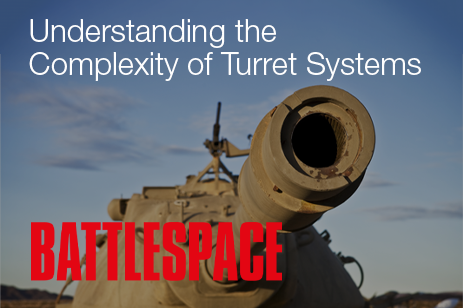
Published in BATTLESPACE
By Christian Kopp, Curtiss-Wright Defense Solutions
From the outside, the turret system on a ground vehicle may appear a straightforward mechanism: The turret resides on the top of the vehicle, and rotates as needed, while raising and lowering the gun barrel when required. Hidden from view, though, is a highly precise and complex system that integrates several key mechanical and computational subsystems that are either supplied by the platform’s manufacturer or from a number of different, highly specialized vendors.
What drives the rotational movement of the turret is the turret aiming and stabilization drive system (for an example, see Curtiss-Wright’s Turret Drive Stabilization System [TDSS]). Other key elements of a turret system include the sighting system and the fire control system. All of these subsystems must be integrated together so that the information from the sighting system, which locates the target of interest, can be used to accurately position the turret via the stabilization drive system, thus enabling the firing system to engage the target.
All of these functions must occur as close to real-time as possible, with great precision, often while the vehicle is moving at full speed over rugged terrain.